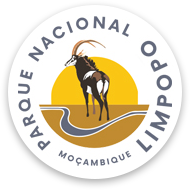The Kruger National Park Game Capture Team is gearing up for another huge animal translocation programme as part of the Great Limpopo Transfrontier Park initiative.
June, July and August will see all sorts of animals, including giraffe, impala, wildebeest, zebra and waterbuck being captured and translocated to the 35 000 hectare animal sanctuary within the confines of the Limpopo National Park (LNP) in Mozambique.
This massive translocation, estimated to include more than 1 000 animals, will culminate in a large group of four families of elephant, approximately 40 animals, being moved to the LNP during the first week of September. The timing of this final translocation fits in with the World Parks Congress (WPC), which will be held in Durban at this time.
Also timed to coincide with the African Union Summit on July 6, a KNP game capture team will capture and translocate one elephant family.
Says Dr Markus Hofmeyr, the head of the game capture team, the translocation of smaller animals like impala, wildebeest, zebra and waterbuck don’t need nearly as much intense veterinary effort as the animals are herded into a capture boma.
“They are then funnelled into trucks and taken to the border where they are immediately let loose through a hole in the boundary fence into the sanctuary in the LNP. This process is relatively quick and lessens the stress on the animals,” he commented.
Of course, the movement of elephant involves a much bigger — and more expensive — operation, which involves darting the elephants, loading them into trucks and then letting them go at a specially prepared boma in the LNP.
During this translocation process, any animals such as rhino or elephant found outside this sanctuary in Mozambique will also be caught by the KNP’s game capture team and put back into the fenced area in order to improve their safety.
Mr Josias Chabani, the Acting Director of the Kruger National Park, recently made the following remark about the GLTP project.”The boundary fence between us and Mozambique has only been there since 1976 when the war started in that country. Before that date, the animals moved freely between the two countries following their age-old migratory routes. All we are doing with the GLTP is to give the animals their freedom that they have been deprived of since that date.”
Animal translocation from the KNP to the LNP began during 2001 when the first group of elephants were translocated. Former South African President Nelson Mandela stated at the time that the elephants were part of his “labola” after he married Ms Graca Machel.
According to GLTP documentation, the speed of the translocations is important because:”The sooner the animals are translocated, the sooner their numbers will start increasing naturally.”
The animals will then build up numbers in those areas and hopefully, by the time the full length of the fence between the KNP and the LNP is dropped, the animals will have become used to the fact that they now have freedom to move between the two countries.
Fact sheet
- This is the second major translocation project between the KNP and the LNP. Previously, 1 130 animals consisting of wildebeest, giraffe, impala, warthog, waterbuck, zebra and 48 elephants were translocated to the game sanctuary in the LNP during August 2002.
- The GLTP process is managed by a joint management board (JMB), which is under the guidance of a tri-lateral Ministerial Committee. The JMB is made up of four representatives from all three countries (Zimbabwe, South Africa and Mozambique).
- The JMB has different management committees advising it on different matters, which include issues such as conservation, safety and security, finance, human resources, legislation and tourism.
- During November last year, SA’s two-year term as co-ordinating country came to an end. Mozambique has now taken over in this role.
- South Africa’s President Thabo Mbeki, Mozambican President Joachim Chissano and Zimbabwe’s President Robert Mugabe signed the treaty for the establishment of the Great Limpopo Transfrontier Park on December 9, 2002 in Xai-Xai, Mozambique.
- On December 11, 2003, the South African Minister of Environmental Affairs and Tourism, Honorable Mr Valli Moosa and Mozambican Minister of Tourism, Honorable Mr Fernando Sumbana symbolically removed 20 metres of the border fence between Mozambique and South Africa.
- It is envisaged that the establishment of the GLTP (35 000 square kilometers) will eventually lead to the development of a larger Transfrontier Conservation Area spanning 99 800 square kilometers.
- The GLTP consists of the following national parks and areas: Limpopo National Park (Mozambique), Kruger National Park (South Africa), Makuleke Contractual Area (South Africa), Sengwe Corridor (Zimbabwe), Gonarezhou National Park (Zimbabwe), Malipati Safari Area (Zimbabwe) and Manjinji Pan Sanctuary (also Zimbabwe).
- Work on the new R6 million border post between South Africa and Mozambique at Giriyondo — situated on the border between Shingwedzi and Letaba — has already started and should be completed early next year.
- A road linking the KNP tourism network and Giriyondo will be completed at the same time.
- The access road to the Pafuri Border Post will be upgraded.
- Access to the Zimbabwe part of the GLTP across the Limpopo River is presently being investigated.
- Approximately 20 kilometres of the KNP’s eastern boundary fence will be dropped in the near future.
- These and other developments will cost R40 million.

